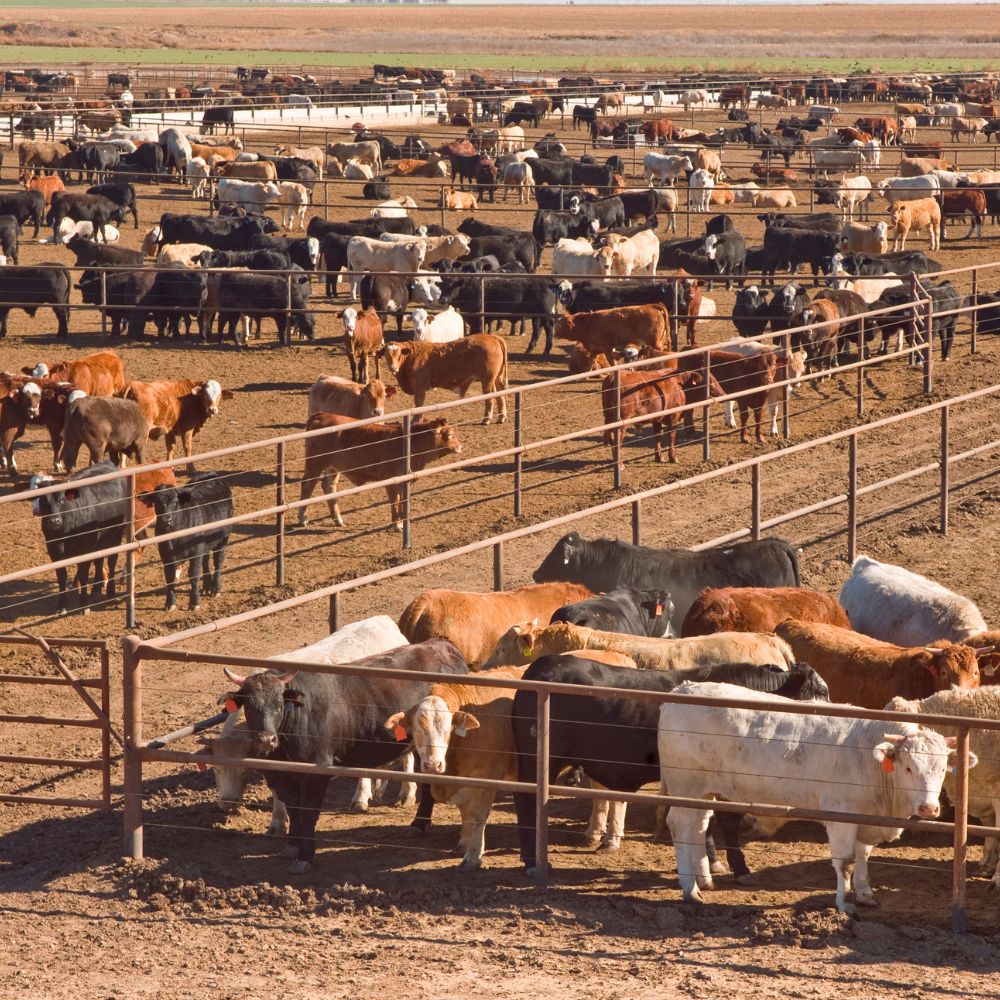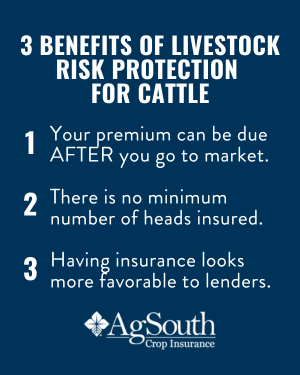Proactive Defense: Bagley Risk Management Methods
Proactive Defense: Bagley Risk Management Methods
Blog Article
Key Elements to Take Into Consideration When Picking Livestock Danger Protection (LRP) Insurance Policy
When examining options for Livestock Threat Security (LRP) insurance policy, several key variables necessitate careful consideration to guarantee efficient risk management in the agricultural market. Choosing the right protection options customized to your certain livestock procedure is extremely important, as is understanding how exceptional prices correlate with the degree of security provided.
Insurance Coverage Options
When considering Livestock Danger Security (LRP) insurance coverage, it is important to recognize the various protection choices readily available to minimize threats in the agricultural sector. Livestock Danger Protection (LRP) insurance coverage supplies different insurance coverage choices tailored to meet the diverse needs of animals producers. Bagley Risk Management. One of the main protection alternatives is cost coverage, which shields versus a decline in market value. Manufacturers can choose the insurance coverage level that straightens with their cost danger management goals, permitting them to safeguard their procedures against prospective financial losses.
An additional important protection option is the recommendation period, which identifies the length of time the coverage holds. Producers can pick the recommendation duration that ideal matches their production cycle and market conditions. Furthermore, insurance coverage degrees and prices vary based on the type of livestock being insured, offering producers the versatility to customize their insurance plans according to their specific requirements.
Understanding the different protection options readily available under Livestock Risk Defense (LRP) insurance policy is important for producers to make enlightened choices that effectively shield their animals procedures from market uncertainties.
Costs Expenses

Livestock Threat Defense (LRP) insurance offers necessary insurance coverage alternatives customized to minimize risks in the farming sector, with a significant aspect to think about being the computation and framework of premium costs. When establishing premium expenses for LRP insurance policy, numerous variables enter play. These include the kind and variety of animals being insured, the coverage level selected, the present market value, historical price data, and the size of the protection period. Insurers may also think about the location of the ranch, as geographical factors can impact the overall risk profile.
Insurance companies analyze historical data on livestock costs and manufacturing expenses to establish an ideal costs that reflects the level of threat involved. It is crucial for animals manufacturers to very carefully evaluate premium prices and protection choices to guarantee they are adequately safeguarded against possible financial losses due to damaging market conditions or unpredicted occasions.
Qualified Animals
The resolution of eligible livestock for Animals Danger Defense (LRP) insurance policy coverage includes careful factor to consider of specific requirements and characteristics. Livestock kinds that are commonly eligible for LRP insurance policy consist official statement of feeder livestock, fed livestock, lambs, and swine.
Feeder cattle, for instance, are generally qualified for LRP coverage if they drop within specified weight ranges. Lambs are another classification of livestock that can be thought about for LRP insurance, with factors such as weight and age playing an important duty in establishing their eligibility.
Prior to picking LRP insurance coverage for livestock, manufacturers need to thoroughly examine the qualification criteria detailed by the insurance copyright to guarantee their animals satisfy the required demands for insurance coverage.
Policy Flexibility
Policy versatility in Animals Danger Security (LRP) insurance coverage enables manufacturers to tailor insurance coverage to fit their specific demands and run the risk of monitoring techniques. This flexibility encourages animals producers to personalize their insurance plans based on factors such as the type of livestock they have, market conditions, and private risk resistance levels. By supplying customizable alternatives, LRP insurance coverage allows producers to effectively handle their danger exposure while securing their animals operations against unexpected market volatility.
Claims Process
Upon experiencing a loss or damages, manufacturers can initiate the claims process for their Animals Risk Defense (LRP) insurance by immediately contacting their insurance policy supplier. It is vital for producers to report the loss asap to speed up the claims process. When connecting to the insurance provider, producers will need to offer comprehensive information concerning the occurrence, consisting of the day, nature of the loss, and any kind of appropriate documents such as veterinary records Read More Here or market value.

After the analysis is total, the insurance service provider will certainly decide concerning the case and communicate the end result to the producer. If the claim is accepted, the manufacturer will obtain compensation according to the regards to their Livestock Threat Defense (LRP) insurance coverage policy. Bagley Risk Management. It is crucial for producers to be aware of the insurance claims process to guarantee a smooth experience in the occasion of a loss

Conclusion
In verdict, when choosing Livestock Danger Security (LRP) insurance, it is necessary to think about protection alternatives, premium costs, qualified animals, policy versatility, and the claims process. These key aspects will certainly aid make certain that farmers and ranchers are adequately protected versus possible risks and losses related to their animals procedures. Making an educated decision based upon these factors to consider can inevitably bring about far better economic protection and assurance for animals producers.
Livestock Threat Defense (LRP) insurance coverage provides different coverage choices tailored to meet the diverse needs of livestock producers.The resolution of qualified livestock for Livestock Risk Security (LRP) insurance coverage entails mindful factor to consider of particular standards and characteristics.Plan flexibility in Livestock Risk Security (LRP) insurance coverage allows producers to customize coverage to match their specific demands and risk article source administration approaches.Upon experiencing a loss or damage, producers can initiate the insurance claims procedure for their Livestock Threat Protection (LRP) insurance by quickly contacting their insurance service provider.In verdict, when selecting Livestock Risk Security (LRP) insurance coverage, it is vital to think about insurance coverage choices, premium prices, eligible livestock, policy adaptability, and the insurance claims procedure.
Report this page